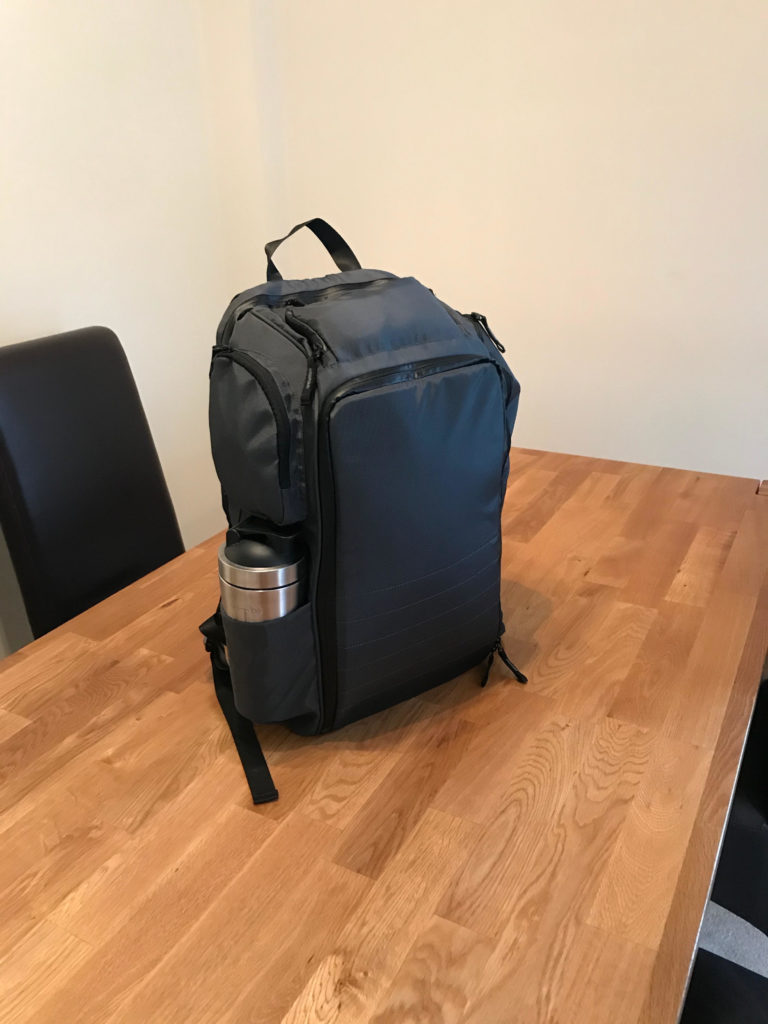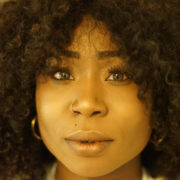Gymshark Womenswear Designer Rochelle Mills on the price of inclusion in design

By Dan Chirwa
Spending 40 minutes in the company of one of the rising product designers in sports apparel was a conflicting experience. One of the few black senior womenswear designers of any profile in the UK and beyond, Rochelle Mills is undoubtedly sick at what she does. Indeed she is valued as such by her employers, the growing sportswear brand Gymshark. Roch’s influence is evident within the product range as is her determination to make gym wear more comfortable, practical and inclusive.
So where’s the conflict? Design as an industry is white-dominated, which isn’t necessarily the problem. The problem is the price we all pay when the cost of inclusivity in design is too high. That individuals like Roch are at the forefront of driving change is heartening but our Black Perspectives IG Live conversation outlined just how fashion and product design has to go.
Placing minority groups in the heart of design will improve the product, brand consideration, bottom line and–let’s be honest–the world. Here are four ways in which design must change.
Implicit biases in design
“With the way that products are designed, you do get slight biases. Mannequins are off white, so certain products will [only] look good on this shade.”
Unless you are in the design process, it is unlikely that you’ll draw the connection between mannequins being white and clothes not quite looking how you thought they would when you bought them. It is a legacy of white-dominated design and it matters.
After a year in which we have only been able to shop online, during which fast fashion has boomed, and a cursory glance at the product pages of Boohoo and (the OG) ASOS shows they’re thinking ahead in some ways with their diversity of model aesthetic on display. But as
Roch pointed out, this is a consideration that needs to be threaded into the thinking phase long before samples have been stitched.
Athleisure is meant to be durable and supportive. It needs to make the wearer feel good and look good. And it needs to do all this both when you’re dry and meeting friends for a coffee and thoughts couldn’t be further from a burpee; and when you’re dripping wet after a sadistic HIIT session and you are feeling knackered and vulnerable stepping out into the bright sunlight of a busy high street. People with different skin tones and body shapes deserve to be considered too.
The price of inclusivity
“The price of inclusivity in the industry is high, particularly for small businesses who want to develop products in multiple shades and sizes, but if you do it with purpose it pays off.”
I had a very good friend working as a PT who was tired of having to carry either multiple bags or a massive holdall to the gym to cater for his change of training wear, food, drinks and mac while training. He also had a degree in design going unused, so he designed and got some bag prototypes made. I remember laughing as he told me about the numbers you have to commit to get to that stage–in pounds and units of samples. It is a huge financial burden. Colour tones and samples cost money.
It is not a commitment that necessarily gets any easier for larger companies as Roch explained. Thankfully we’re moving away from the days where “tan” is simply one shade of anaemic latte but for a company even the size of Gymshark to produce multiple shades and sizes, there are obstacles that increase the price of inclusivity. From the capabilities of machines to scaling up vendor capabilities–the bottom line is diversity needs extra investment.
And just as we spoke about mannequins, when you have a minimum sample runs into the thousands for different colours the price adds up. There are three brown emojis but I do assure you there are slightly more variations of skin tone in reality–finding yourself represented on rails is a huge deal. Brands need to practice what they preach and have a culture and structure where committed advocates can push these things through when it is numbers time. Minority faces in high places.
Smaller or less committed brands would hide behind those obstacles and never even make it to the sample stage. That’s the price of inclusivity.
Real influence over imitation
“Being influenced by” [communities] is a bit of a cop out for brands. Bring [them] in the room, have conversations, give them a platform. Collaboration means more diversity in the industry.
It is big big 2021 and no longer can companies shamelessly knock off African tribal prints and styles and put it down to “influence”. Mainstream Design no longer has any excuse to colonise Black culture–the collabs are here and they are real and giving Black designers agency within the process yields a better result for all.
Huge labels like Fenty, Gymshark and Adidas with the Ivy Park collaboration, are reaping the benefits of having the people designing the products looking like the consumers, and having them in mind. Lines made with Black people and minority groups considered in every thread will transcend race. We can seed products to Mo’nique AND Reese Witherspoon separately and it’s calm–we will celebrate it.
This is a journey that design is on and there will be missteps. As Roch said “I definitely don’t have all the answers and nor does the internet. Bring people together, ask questions, understand different elements of your community.”
Time to get more women in the room
“Supporting women needs to not be a moment, it needs to be a movement through the business at every layer. There needs to be a strategy to better the female experience within businesses. There’s a lot of lip service in some brands.”
The presence of a Kanye or a Virgil on the scene opens eyes and doors for high-profile Black men as we have seen with Kerby Jean Raymond at Reebok and Jerry Lorenzo at Adidas. But what of the plight of women designers? It is an area that needs work.
The numbers that the brands mentioned above are doing with considered, audience-first lines and production are showing it makes financial sense to put women in charge of the thinking and processes. This will begin to take care of the logistical barriers too.
My Live chat with Rochelle left me angry at the simple obstacles blocking the way to quick wins when it comes to design diversity. Ultimately though, I was excited at the prospect of the next generation of designers we have leading the way, particularly given what they have overcome and what they are making. With Black industry leading lights come Black interns, who then lead their own labels. The ground broken today splinters into fertile islands of bounteous, original, minority community-owned brands tomorrow. More choice and a better industry.
“You can be whoever you want to be within design. The more personalities in the room, the more powerful the outcome will be.”
Collaboration and representation are great. Empowerment within the design process is better. Change is coming.
Check out more fashion content here




![ZINO VINCI’S ‘FILTHY & DISGUSTING’EP BRINGS YOU TO THE CORE OF THE ARTIST [@ZinoVinci]](https://guap.co/wp-content/uploads/2023/10/Zino-4.jpg)





